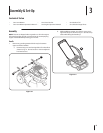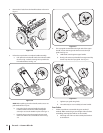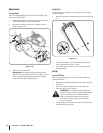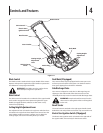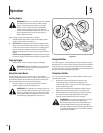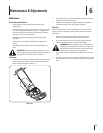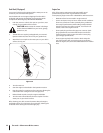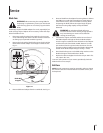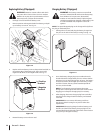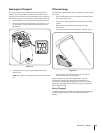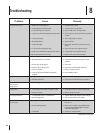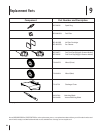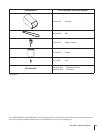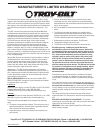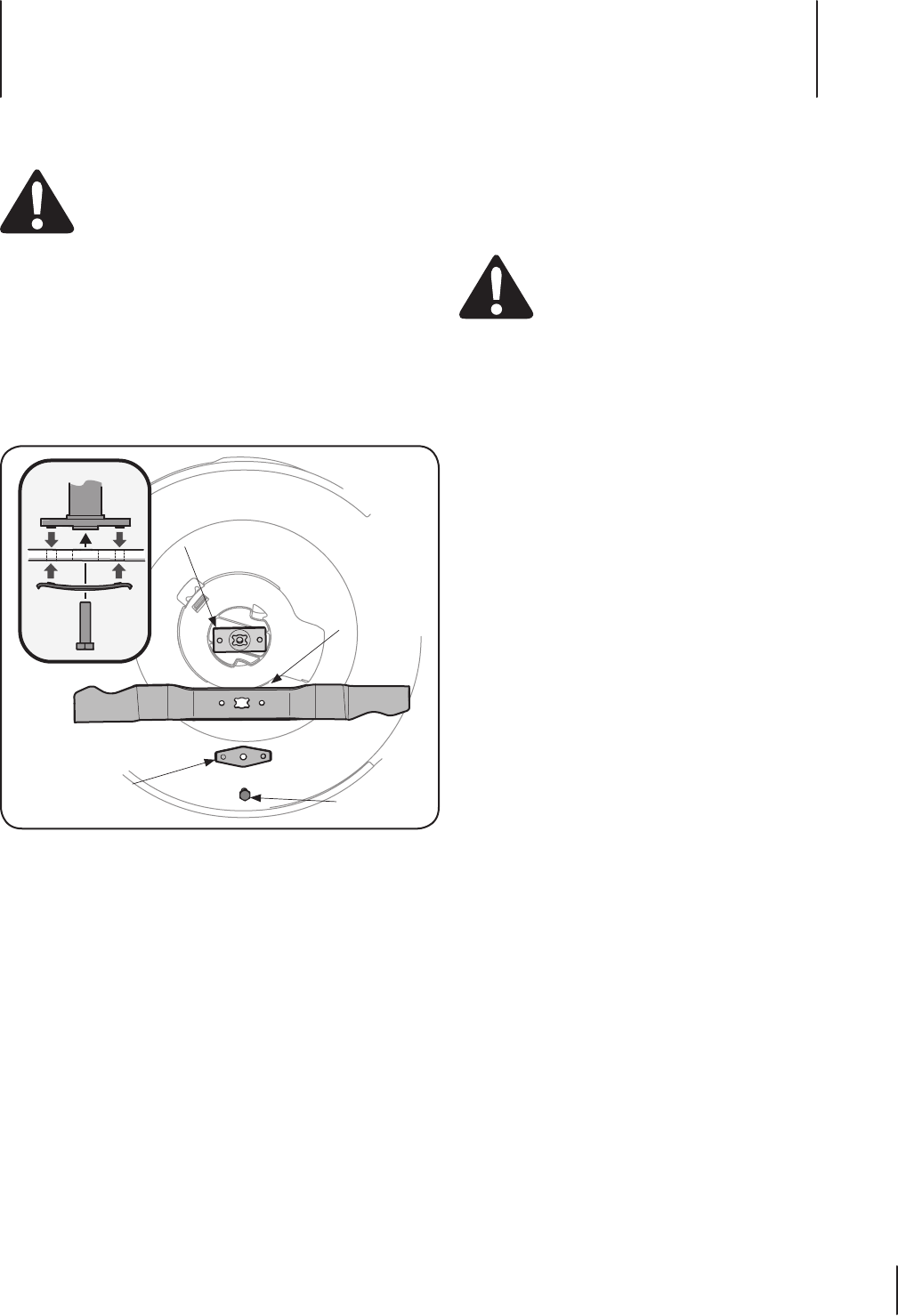
Se rvice
7
17
Blade
Blade
Adapter
Bolt
Blade Bell
Support
4. Remove blade from the adapter for testing balance. Balance
the blade on a round shaft screwdriver to check. Remove
metal from the heavy side until it balances evenly. When
sharpening the blade, follow the original angle of grind.
Grind each cutting edge equally to keep the blade
balanced.
WARNING: An unbalanced blade will cause
excessive vibration when rotating at high speeds. It
may cause damage to mower and could break
causing personal injury.
5. Lubricate the engine crankshaft and the inner surface of
the blade adapter with light oil. Slide the blade adapter
onto the engine crankshaft. Place the blade on the adapter
such that the side of the blade marked “Bottom” (or with
part number) faces the ground when the mower is in the
operating position. Make sure that the blade is aligned and
seated on the blade adapter flanges. See Fig. 7-1 inset.
6. Place blade bell support on the blade. Align notches on the
blade bell support with small holes in blade.
7. Replace hex bolt and tighten hex bolt to torque: 450 in. lbs.
min., 600 in. lbs. max.
To ensure safe operation of your mower, periodically check the
blade bolt for correct torque.
Belt Care
NOTE: Several components must be removed in order to change
the mower’s belt. See an authorized Service Dealer to have your
belt replaced.
Blade Care
WARNING: When removing the cutting blade for
sharpening or replacement, protect your hands with
a pair of heavy gloves or use a heavy rag to hold the
blade.
Periodically inspect the blade adapter for cracks, especially if you
strike a foreign object. Replace when necessary. Follow the steps
below for blade service.
1. Disconnect spark plug boot from spark plug. Turn mower
on its side making sure that the air filter and the carburetor
are facing up (not pointed toward the ground).
2. Remove the bolt and the blade bell support which hold the
blade and the blade adapter to the engine crankshaft. See
Fig. 7-1.
3. Remove blade and adapter from the crankshaft. See Fig. 7-1.
Figure 7-1



